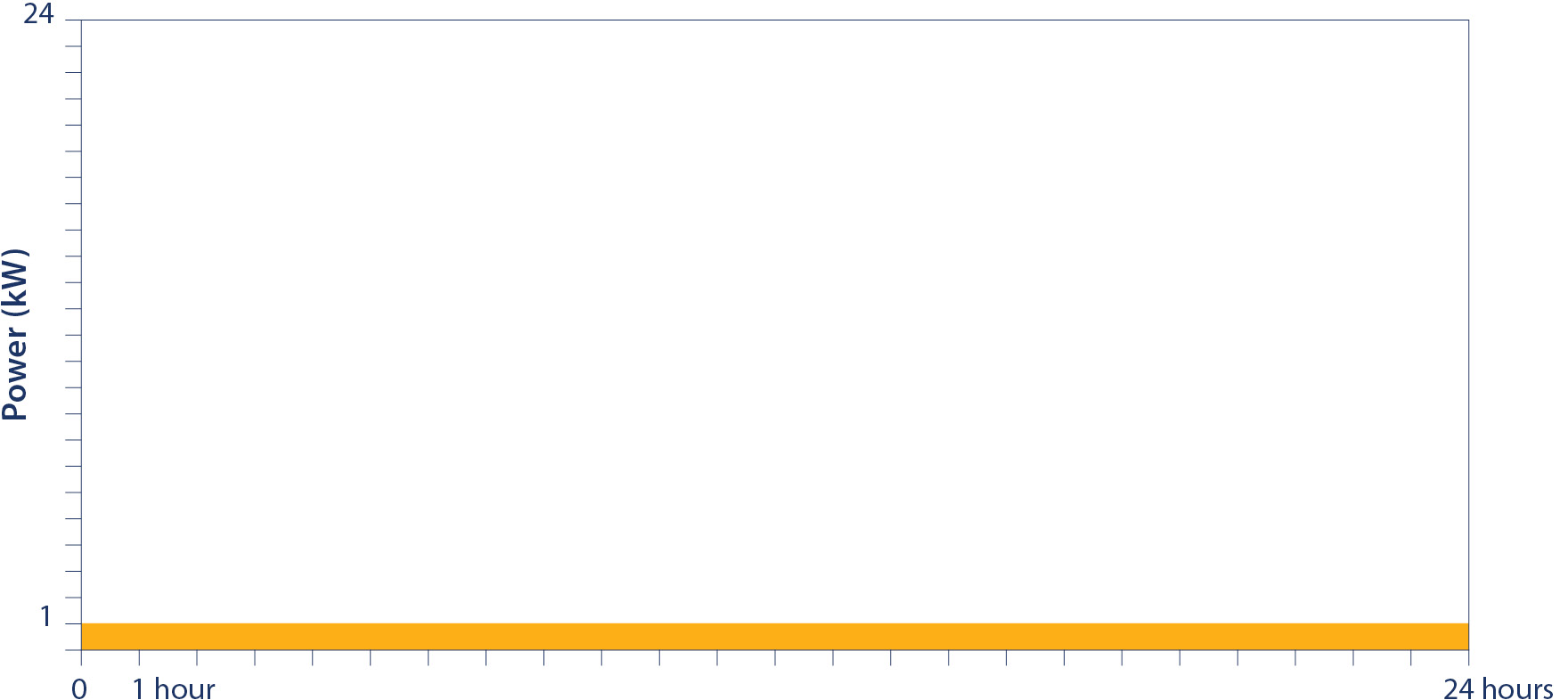Understanding power and power demand
What’s the difference between energy and power?
Video: Power and energy
Learn about the difference between power and energy, two ways to measure electricity.
Various ways of measuring power and power demand
Video: Real power
Learn about real power and
the underlying concepts.
Video: Apparent power
Learn about apparent power and
the underlying concepts.
Video: Minimum demand
Learn about minimum demand and
the underlying concepts.
Video: Billing demand
Learn about billing demand and
the underlying concepts.
Why bill for power demand?
Power demand is one of the main components of electricity rates, because rates reflect the costs actually incurred by Hydro‑Québec to deliver electricity.
As the example below shows, basing billing solely on kilowatthours (energy) used wouldn’t be fair: it wouldn’t take into account the cost of supplying electricity to meet power demands that can vary in size and duration from customer to customer.


In this example, Hydro‑Québec has to have equipment with a capacity 24 times greater for Customer 1 than for Customer 2. Not only is the equipment more expensive, it will be used only 1 hour out of 24.
Do you pay for power demand?
That depends on your service contract rate, which takes into account your power needs.
How billing demand is determined
Various ways to measure power and power demand
To determine billing demand, Hydro‑Québec measures your power two ways using your facility’s electricity meter:
How to read a Rate G bill with billing demand
Rate G has a demand charge only when your power demand exceeds 50 kilowatts. For medium‑power rates, the demand charge is billed from the first kilowatt.
Here’s an example of Rate G bill along with explanations.


- Consumption data recorded by the meter for the consumption period.
- Minimum billing demand, which is 65% of the highest power demand during a period falling entirely within the winter period.
- Highest real power demand during the consumption period.
- Highest apparent power demand during the consumption period.
- 90% of the highest apparent power demand (90% × 60,0 = 54,0).
- Billing demand, which is the highest of the values in item 2 (8,3 kW), item 3 (60,0 kW) or item 5 (54,0 kW).
- The cost of power, based on billing demand (item 6) greater than 50 kW (60,0 kW - 50,0 kW = 10,0 kW).
Real power
Amount of electricity consumed in a useful manner to operate equipment, such as a motor or a heating or lighting system. Real power is expressed in kilowatts (kW).
Apparent power
Amount of electricity that Hydro-Québec supplies to a customer, expressed in kilovoltamperes (kVA). When it is used, apparent power breaks down into real power (kW), which runs devices, and reactive power (kVAR), which produces magnetic fields and which is not useful power for the customer.
Minimum demand
Minimum demand is 65% or 75% of your highest power demand during a period falling entirely within the winter period.
Winter period
Period from December 1 through March 31 of the next year, inclusive.
